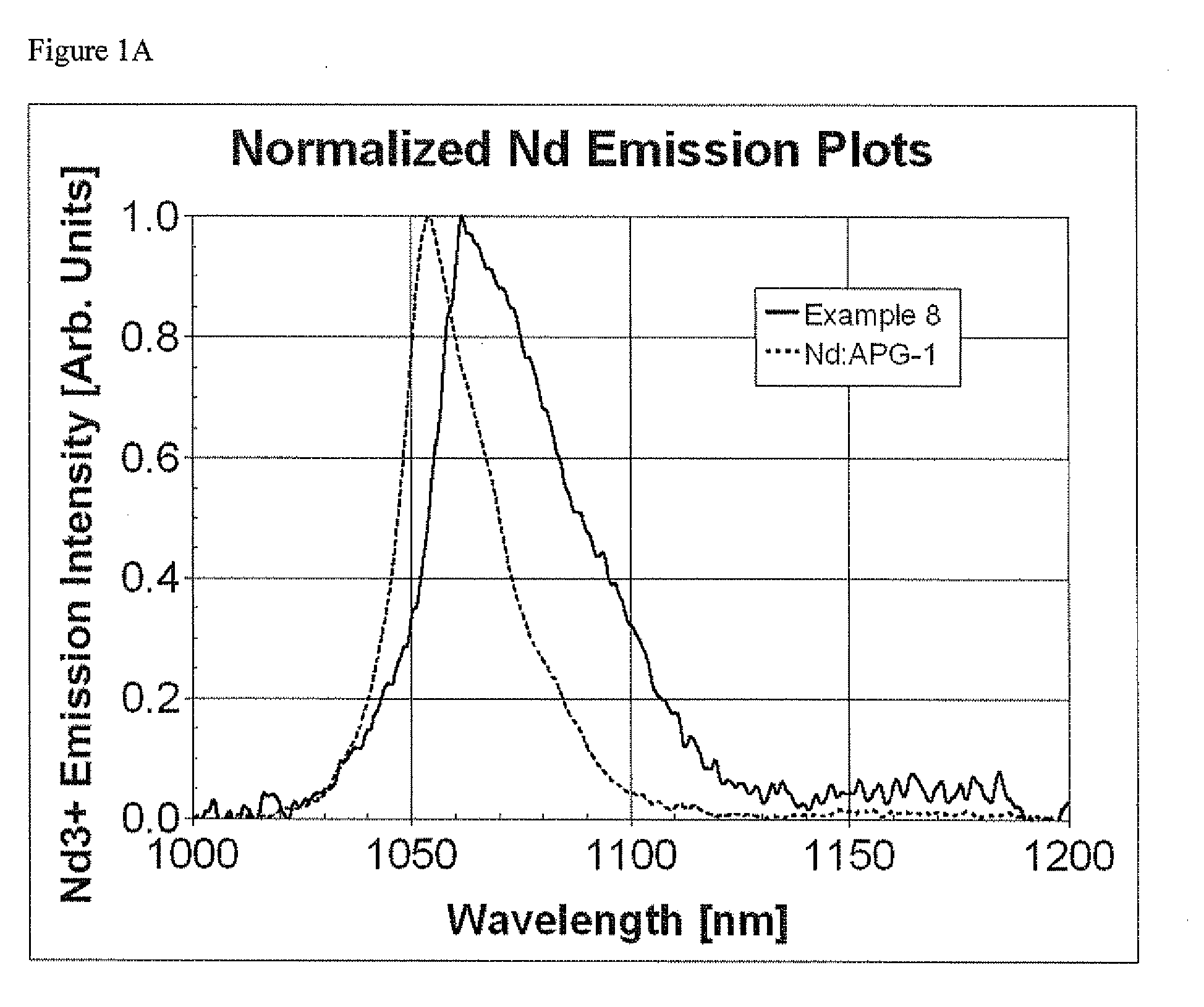Rear earth aluminoborosilicate glass composition
- Summary
- Abstract
- Description
- Claims
- Application Information
AI Technical Summary
Benefits of technology
Problems solved by technology
Method used
Image
Examples
Embodiment Construction
which contains Yb was ground into fine powders using tungsten carbide grinding cell. A powdered sample is used in order to obtain a reliable emission spectrum, minimizing the excited state absorption (ESA). For Example 8, which contains Nd, the ESA is insignificant and therefore, a transparent glass block was used to measure Nd emission spectrum.
[0075]FIG. 1 graphically illustrates a comparison of Nd and Yb emission spectra of Examples 7 and 8 with APG-1 glasses containing Yb and Nd (commercially available laser glass sold by Schott North America, Inc), respectively. The results confirm that the lanthanum aluminoborosilicate glass according to the invention effectively broadens the lasing ion emission spectrum, thus further demonstrating that the glass composition according to the invention is very suitable for laser glass applications.
[0076]The bandwidth for the lanthanum aluminoborosilicate glasses according to the invention is comparable to that possessed by broad band aluminate ...
PUM
| Property | Measurement | Unit |
|---|---|---|
| Force | aaaaa | aaaaa |
| Pressure | aaaaa | aaaaa |
| Substance count | aaaaa | aaaaa |
Abstract
Description
Claims
Application Information
 Login to View More
Login to View More - R&D
- Intellectual Property
- Life Sciences
- Materials
- Tech Scout
- Unparalleled Data Quality
- Higher Quality Content
- 60% Fewer Hallucinations
Browse by: Latest US Patents, China's latest patents, Technical Efficacy Thesaurus, Application Domain, Technology Topic, Popular Technical Reports.
© 2025 PatSnap. All rights reserved.Legal|Privacy policy|Modern Slavery Act Transparency Statement|Sitemap|About US| Contact US: help@patsnap.com



